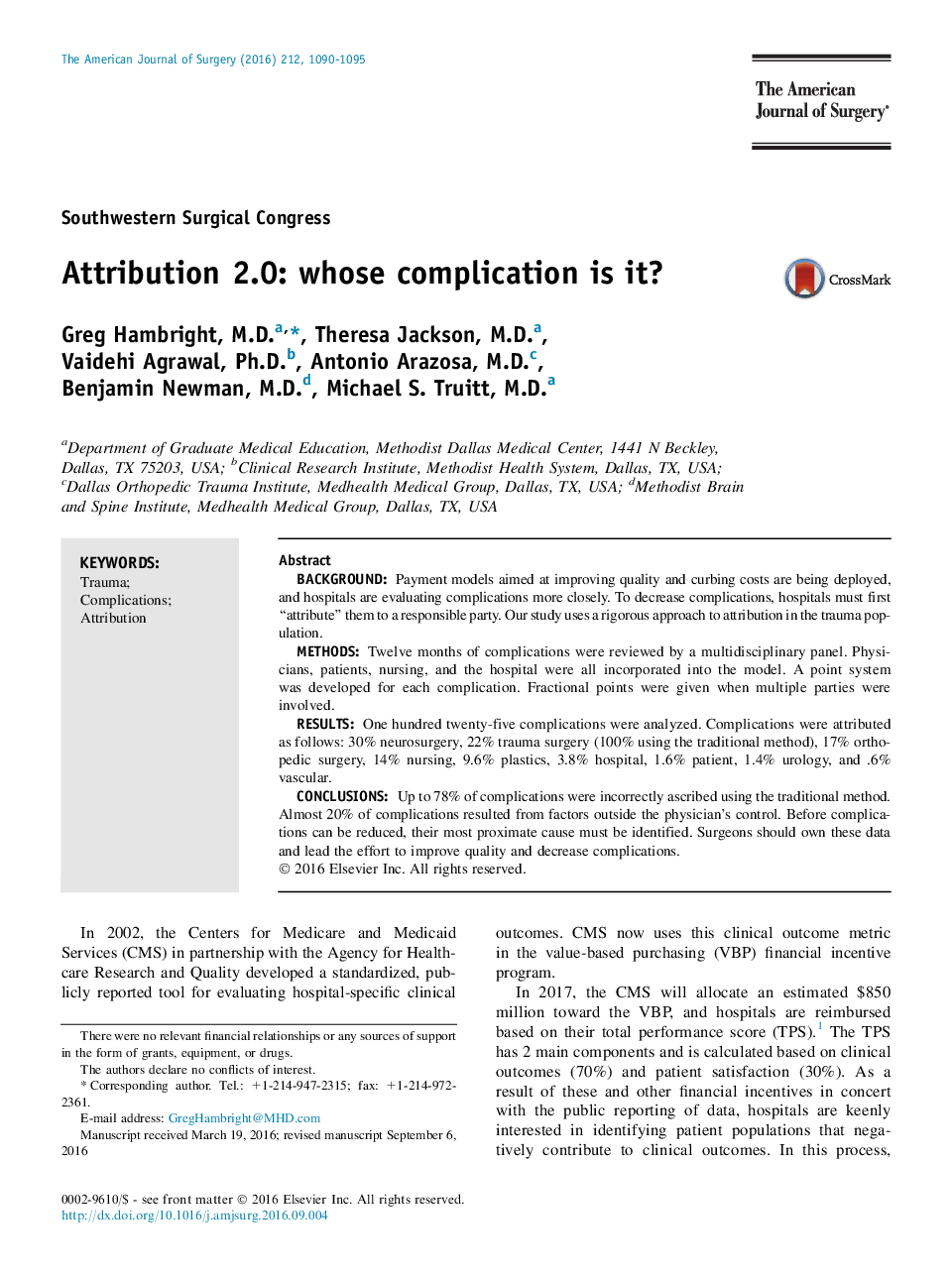| Article ID | Journal | Published Year | Pages | File Type |
|---|---|---|---|---|
| 5731334 | The American Journal of Surgery | 2016 | 6 Pages |
BackgroundPayment models aimed at improving quality and curbing costs are being deployed, and hospitals are evaluating complications more closely. To decrease complications, hospitals must first “attribute” them to a responsible party. Our study uses a rigorous approach to attribution in the trauma population.MethodsTwelve months of complications were reviewed by a multidisciplinary panel. Physicians, patients, nursing, and the hospital were all incorporated into the model. A point system was developed for each complication. Fractional points were given when multiple parties were involved.ResultsOne hundred twenty-five complications were analyzed. Complications were attributed as follows: 30% neurosurgery, 22% trauma surgery (100% using the traditional method), 17% orthopedic surgery, 14% nursing, 9.6% plastics, 3.8% hospital, 1.6% patient, 1.4% urology, and .6% vascular.ConclusionsUp to 78% of complications were incorrectly ascribed using the traditional method. Almost 20% of complications resulted from factors outside the physician's control. Before complications can be reduced, their most proximate cause must be identified. Surgeons should own these data and lead the effort to improve quality and decrease complications.
